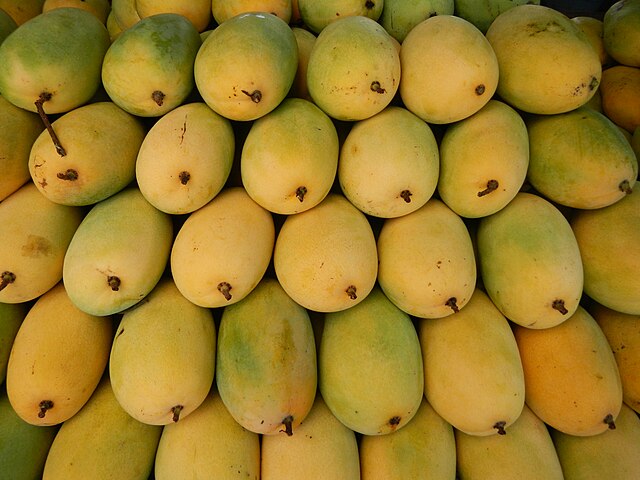Stakeholders in Ghana have engineered a three-tier approach to maximize the processing of the local mango (mangifera indica). They aim to cut post-harvest losses that decimate 30% of the total harvest, especially in the main April-August season.
The Tree Crops Development Authority (TDA)’s CEO Dr. Andy Osei Okrah evolved the farmers’ empowerment strategy during a processing zone tour on June 25, 2025.
Dr. Okrah signaled the end of post-harvest losses through empowering farmers, offering inputs and supplying graded seedlings.
Three Goals
On the first score, farmers will continue to receive training that can help their crop meet international standards.
Secondly, input support will enable growers boost production of raw materials to the currently low-supplied processing industry.
Tied to inputs is the expansion of land under mangoes to meet the rising demand in mostly European destinations. According to the Food and Agriculture Organization (FAO), Ghana’s mango/mangosteen area dropped from 7,339 hectares (ha) in 2019 to 7,070 ha in 2023.
Finally, the procurement of high quality seedlings via research bodies and agribusinesses will help combat the climate toll on the important fruit.
Indeed, mangoes are the second biggest tropical fruit export by Ghana: combined guava-mango exports hit 8,202.9 tonnes in 2022.
High-Profile Processing
The end result of the above goals is to boost processing, which currently depends mainly on private agribusinesses.
One of these is HPW Fresh and Dry Ltd, one of the stops by Dr. Okrah during his recent working visit to processors. The CEO seconded the company as West Africa’s biggest dry mango processor, with an annual capacity of 2,400 tonnes.
Besides sourcing from 1,700 smallholder producers, the firm grows its own mangoes that span over 30 cultivars.
Another key producer-processor that the TDA boss visited is Bomarts Farms in eastern Ghana, whose workforce constitutes 60% women.
Through collaboration with the TDA, these two processors aim to stem the toll of poor storage and handling on mango processing. If these strategies work, they will make the mango sector unstoppable as a major export base, as the statistics below indicate.
Ghana Mango Statistics
Ghana is Africa’s second biggest mango, guava and mangosteen exporter, behind Egypt. In 2022, the West African country exported the above assorted fruits worth $59.13 million, according to the World Bank. With 8,202.94 tonnes in total shipments, it ranked 13th worldwide for the assorted fruits’ volume in 2022.
In terms of production, Ghana came 30th worldwide in 2021, behind Ethiopia and Egypt in the African context. However, the national sector has recorded a fairly steady output in the five-year period ending in 2023, per the FAOSTAT table below.
| Year | Production [tonnes] |
| 2023 | 103,095 |
| 2022 | 101,970 |
| 2021 | 103,465 |
| 2022 | 103,850 |
| 2019 | 98,595 |
Has Ghana’s mango acreage stayed as steady as production in the 2019-23 period?
Unlike production, Ghana’s mango harvest area has slid from the 2019 heights of 7,339 hectares (ha) to 2023’s 7,070 ha. The table below provides a glimpse of the full five-year results.
| Year | Area [Ha] |
| 2023 | 7,070 |
| 2022 | 6,983 |
| 2021 | 7,035 |
| 2022 | 7,192 |
| 2019 | 7,339 |
By which rate has mango output in Ghana grown historically?
According to Report Linker, mango production in Ghana has sustained a 4% growth rate annually since 1966. The research aggregator predicts that 2026 production will hit 140,670 tonnes, indicative of 2.5% yearly growth.
